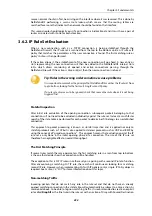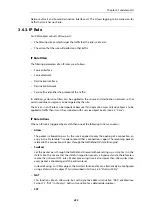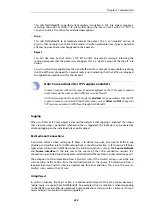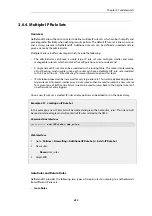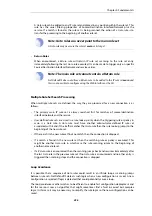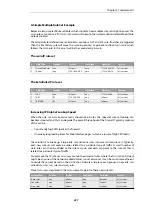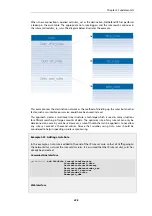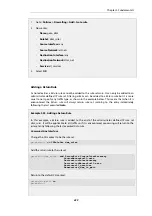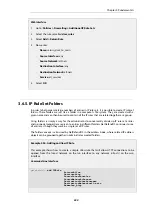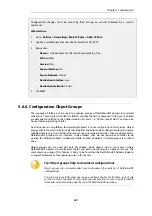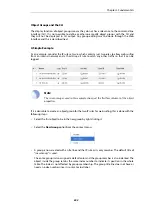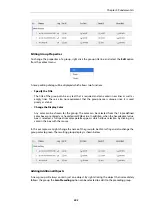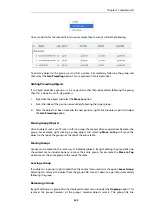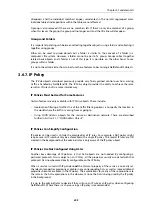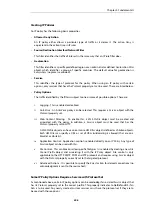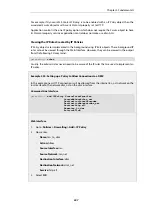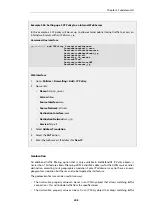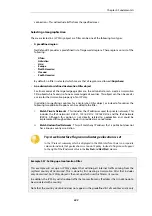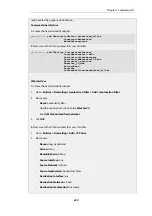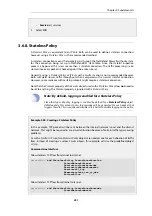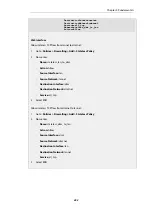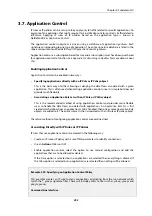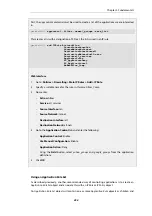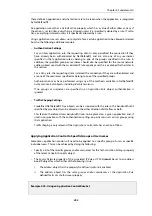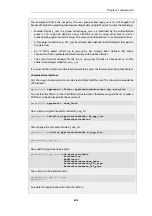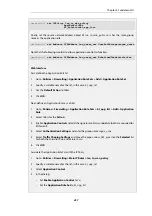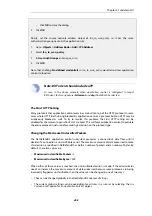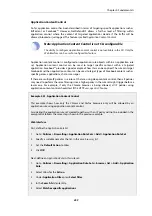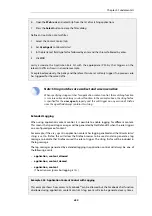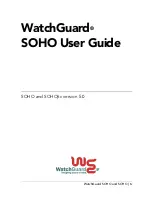
Creating IP Policies
An IP policy has the following basic properties:
•
Allow or Deny Action
An IP policy either allows a particular type of traffic or it denies it. The action
Deny
is
equivalent to the action
Drop
in IP rules.
•
Source/Destination Interface/Network Filter
This filter identifies the traffic of interest in the same way that an IP rule filter does.
•
Geolocation
This filter identifies a specific predefined region or an administrator defined
Geolocation Filter
object which identifies a group of specific countries. The default value for geolocation is
Everywhere
(no place is excluded).
•
Service
This identifies the type of protocol for the policy. When using an IP policy with certain
options, only services that have the
Protocol
property set can be used. These are listed below.
•
Policy Options
The traffic identified by the filter is subject to one or more of possible options. These are:
i.
Logging - This is enabled or disabled.
ii.
Anti-Virus - An Anti-Virus policy can be selected. This requires a
Service
object with the
Protocol
property set.
iii.
Web Content Filtering - To enable this, a
Web Profile
object must be created and
associated with the policy. In addition, a
Service
object must be used that has the
Protocol
property set to
HTTP
.
A
Web Profile
object can have one or more
URL Filter
objects defined as children objects.
Each
URL Filter
can specify a URL or set of URLs (wildcarding is allowed) that are on a
blacklist or whitelist.
iv.
Application Control - Application control is enabled directly on an
IP Policy
. Any type of
Service
object can be used with this.
v.
File Control - This can block or allow specific filetypes. Is is enabled by creating a new
File
Control Profile
object and associating it with the
IP Policy
object. File control is only
applicable to the HTTP, SMTP, POP3 and FTP protocols and requires using
Service
object
with the
Protocol
property correctly set to the targeted protocol.
vi.
Advanced Actions - It is possible to specify the
Reject
action for denied connections (no
acknowledgment is sent to the source host).
Some IP Policy Options Require a Service with Protocol Set
As mentioned above, certain IP policy options can be used only if associated
Service
object that
has its
Protocol
property set to the correct profile. This property indicates to NetDefendOS if an
ALG is to be used. Any newly created, custom services must have the protocol set if they are to
be used with those options.
Chapter 3: Fundamentals
246
Summary of Contents for NetDefendOS
Page 30: ...Figure 1 3 Packet Flow Schematic Part III Chapter 1 NetDefendOS Overview 30 ...
Page 32: ...Chapter 1 NetDefendOS Overview 32 ...
Page 144: ...Chapter 2 Management and Maintenance 144 ...
Page 284: ...Chapter 3 Fundamentals 284 ...
Page 392: ...Chapter 4 Routing 392 ...
Page 419: ... Host 2001 DB8 1 MAC 00 90 12 13 14 15 5 Click OK Chapter 5 DHCP Services 419 ...
Page 420: ...Chapter 5 DHCP Services 420 ...
Page 573: ...Chapter 6 Security Mechanisms 573 ...
Page 607: ...Chapter 7 Address Translation 607 ...
Page 666: ...Chapter 8 User Authentication 666 ...
Page 775: ...Chapter 9 VPN 775 ...
Page 819: ...Chapter 10 Traffic Management 819 ...
Page 842: ...Chapter 11 High Availability 842 ...
Page 866: ...Default Enabled Chapter 13 Advanced Settings 866 ...
Page 879: ...Chapter 13 Advanced Settings 879 ...

